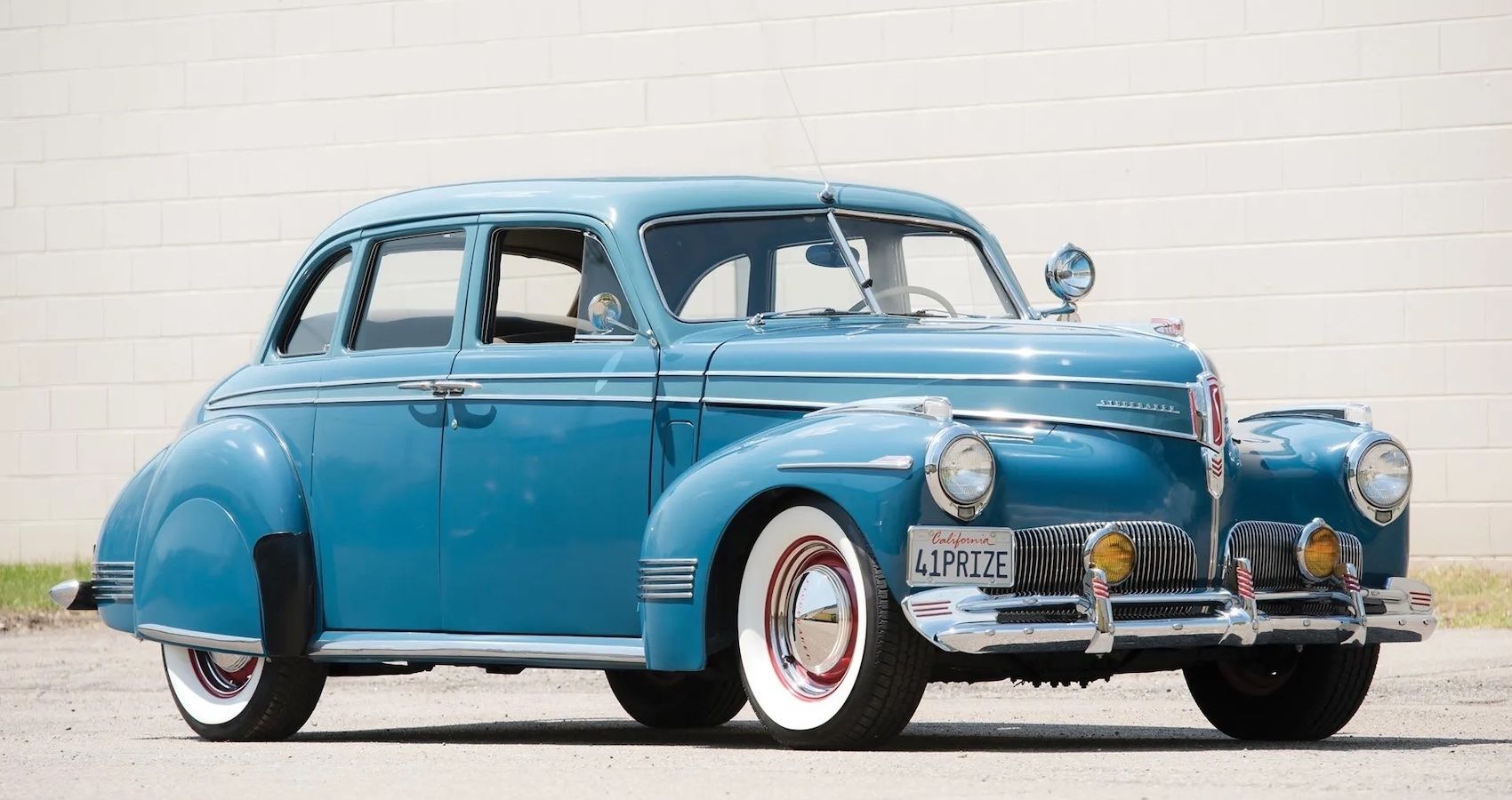From its inception, and throughout its history, the Studebaker, a car company founded by a group of German brothers, was known for innovative designs and technological application. Notably, one of its models, the 1941 Studebaker Commander is a prewar independent classic car that is both rare and beautiful. The full model name is Commander Sedan Coupe, which distinguishes it from several other Commander models introduced in 1941.
It's an early product of the long and enduring partnership between Studebaker and Raymond Loewy Associates. Actually, the Studebaker Brothers' first "horseless carriage" was an electric vehicle. Management has fought to compete with the big three throughout the company's history, but it has proven to be an uphill battle due to sheer volume differences.
This "slipstream" car, designed by Loewy, is all about making it look like it's moving even when it's not, as well as saving gas and having clean lines with Art Deco styling. Certain liberties were taken with the interior in restored condition, and they are unquestionably improvements over the original.
An Epic History Of The 1941 Studebaker Commander
Albert R. Erskine, the company's president in the early 1930s, was determined to put Studebaker on an equal footing with the Big Three by turning away from premium cars and embracing the low-price market. Neither the cheap car Erskine named after himself (plus the Rockne) nor an even less inspired idea to merge with the failing Pierce-Arrow worked. Because of the failures, Erskine committed suicide while the company was facing a financial distress.
After emerging from bankruptcy, Studebaker embraced a new light-six design and decided to use it in a new lower-priced car, the Champion, which debuted in 1939. The Dictator was the name given to a larger Studebaker before it was renamed Commander due to the rise of totalitarianism in Europe and beyond. To commemorate the Champion's debut, Loewy's team redesigned the new Commander.
In both 1940 and 1941, the Commander, which was at the midpoint of Studebaker's model range, received minor aesthetic tweaks, resulting in the pioneering personal coupe. During the immediate pre-war years, these were some of the most elegant and appealing automobiles ever produced. The 1941 Commander introduced two significant styling changes: a one-piece curved windshield and the removal of running boards. Inside and out, there are many fluted, streamlined escutcheons. It's a very sharp car, in keeping with the spiffiness that was beginning to pervade the growing number of mid-priced American cars.
The 1941 Studebaker Commander's Exterior & Interior Design Is One That Commands Attention
The exterior is black with a red "belt trim" bordered by chrome that runs along each side, and sand adds to the illusion of movement while standing still. A large double-bar bumper and two die-cast grilles with vertical vanes sit low in the front fenders, providing ample protection from minor collisions. The leading edge of the hood is adorned with a chrome-plated ornament featuring a wispy "S" on an oxblood-red field. On the deckled, another 19-inch-long die-cast ornament is centered. The stylized taillights are long and narrow, and unlike previous years, they are mounted in the body rather than the fenders. This configuration has the benefit of providing a lit luggage compartment.
The interior has a two-tone deluxe steering wheel, leather panels around the front-door window controls, a two-tone instrument panel, bolster-type pleated upholstery, and carpets front and rear. The passenger compartment features blue-gray broadcloth upholstery. The dash area with the instrumentation has a lot of Art Deco styling. The front and rear door thresholds have been replaced with machined swirl pattern aluminum strips, which add a lovely accent to the interior.
A Powertrain That Curates Amazing Performance: The 1941 Studebaker Commander
A six-cylinder L-head engine in this Commander dates back to the Rockne 65 of 1932. In 1941, the displacement was increased to 226 cubic inches, with a 94-hp at 3,600rpm and a torque of 176Ibs-ft. From 1936 to 1941, this engine was one of the most fuel-efficient on the market, winning its class every year. The car's suspension consists of a single 48-inch-long transverse leaf spring that is 2.5 inches wide and wrapped in grease. The spring was bolted to the front cross member's center and the lower kingpin yokes at each end.
Front and rear Houdaille lever-type shocks were used. The addition of a rear sway bar improves handling. The automatic hill holder, which was standard on Commanders, was another mechanical "first" for Studebaker. When the clutch was engaged, the driver could park on an incline and remove his foot from the brake without worrying about roll-back. This fantastic Studebaker has overdrive, allowing it to maintain highway speeds! The radial tires also make it easier to drive.
Sources: ClassicAutoMall, Hemmings


.jpg)
.jpg)
.jpg)